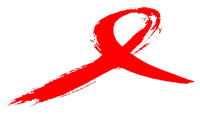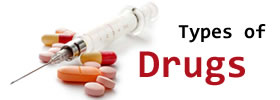Difference between AIDS and HIV
Key Difference: AIDS (Acquired immune deficiency syndrome) is a sexually transmitted disease that is caused by HIV (Human Immunodeficiency Virus). HIV is a virus that causes a body’s immune system to weaken.
AIDS and HIV are related into each other as HIV causes AIDS. The main difference between HIV and AIDS that is that HIV is a virus, while AIDS is a disease.
 AIDS (Acquired immune deficiency syndrome) is a sexually transmitted disease that is caused by HIV (Human Immunodeficiency Virus). HIV virus is what initially infects a person, while AIDS is the disease that is caused during the few final stages of the infection. HIV causes the body’s immune system to constantly deteriorate. The infection alters the immune system, making the body more vulnerable to infections and diseases. HIV virus dates back to the late 19th century in west-central Africa. AIDS and HIV were first identified in the early 1980s.
AIDS (Acquired immune deficiency syndrome) is a sexually transmitted disease that is caused by HIV (Human Immunodeficiency Virus). HIV virus is what initially infects a person, while AIDS is the disease that is caused during the few final stages of the infection. HIV causes the body’s immune system to constantly deteriorate. The infection alters the immune system, making the body more vulnerable to infections and diseases. HIV virus dates back to the late 19th century in west-central Africa. AIDS and HIV were first identified in the early 1980s.
HIV attaches to cells in the body fluids such as semen, blood, vaginal fluids and breast milk; however it cannot be transmitted through sweat, saliva or tears. The infection is most commonly passed to another person via blood to blood or sexual contact. An infected pregnant woman can also infect her child if she opts for a natural vaginal birth or if she breastfeeds her child. Precautions such as opting for cesarean, not breastfeeding the baby and giving the birth antiretroviral drugs can result in the child not contracting the infection.
 The virus enters the human body and rapidly replicates itself and attacks the CD4+ T cells in the human body. The CD4+ T cells are responsible for fighting various different infections from the body, and depletion of this virus weakens the immune system, allowing the body to contract other infections. A person is diagnosed with AIDS when the CD4+ T cell count falls below 200 cells per µL or the occurrence of specific diseases in association with an HIV infection. The most common indicators of the presence of AIDS are pneumocystis pneumonia (40%), cachexia in the form of HIV wasting syndrome (20%) and esophageal candidiasis.
The virus enters the human body and rapidly replicates itself and attacks the CD4+ T cells in the human body. The CD4+ T cells are responsible for fighting various different infections from the body, and depletion of this virus weakens the immune system, allowing the body to contract other infections. A person is diagnosed with AIDS when the CD4+ T cell count falls below 200 cells per µL or the occurrence of specific diseases in association with an HIV infection. The most common indicators of the presence of AIDS are pneumocystis pneumonia (40%), cachexia in the form of HIV wasting syndrome (20%) and esophageal candidiasis.
HIV can be transmitted through three main routes: sexual, exposure to infected body fluids or tissues and from mother-to-child. Sexual is the most common form of transference, followed by exchanging contaminated needles and blood transfusions.
Symptoms of early HIV infection include:
- fever
- chills
- joint pain
- muscle ache
- sore throat
- sweats (particularly at night)
- enlarged glands
- a red rash
- tiredness
- weakness
- weight loss
Symptoms of AIDS include:
- blurred vision
- diarrhea, which is usually persistent or chronic
- dry cough
- fever of above 37 °C (100 °F) lasting for weeks
- night sweats
- permanent tiredness
- shortness of breath
- swollen glands lasting for weeks
- weight loss
- white spots on the tongue or mouth
There is no cure for HIV/AIDS; however there are treatments that are available in order to slow down the progression of the disease. Best preventing measure for HIV/AIDS include abstinence, condoms, limit number of sexual partners, refrain from using contaminated needles, choose sexual partners with care, and get checked for HIV/AIDS.
Image Courtesy: bigthink.com, aidstaskforce.org









Add new comment